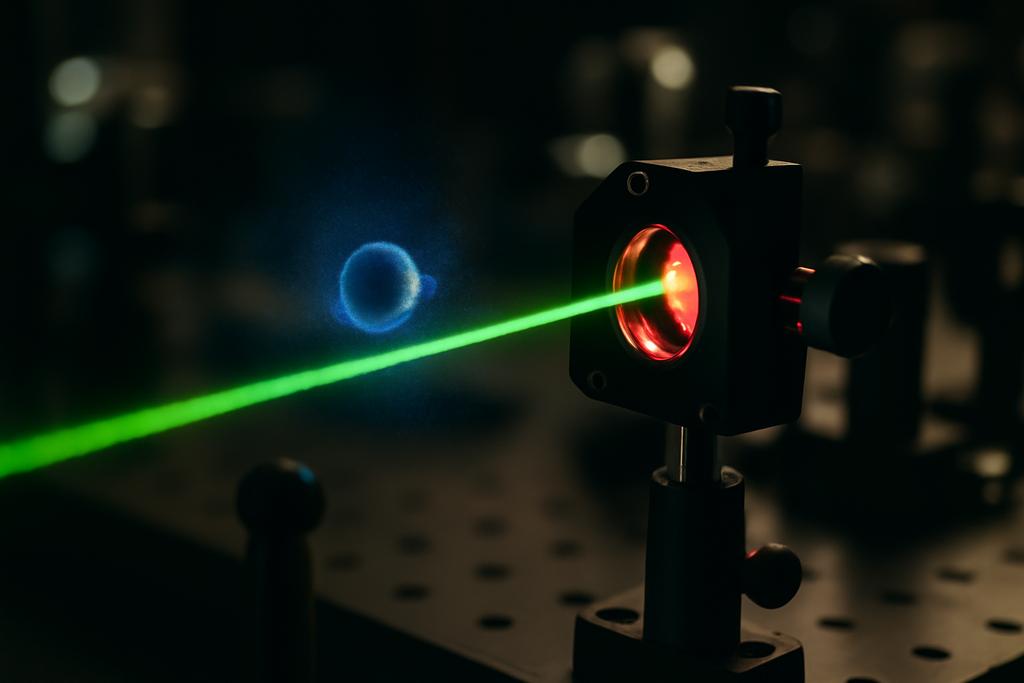What if the very act of observing an electron changed the light around it, weaving them together in a bizarre quantum dance? That’s not science fiction, but a glimpse into the weird world of strong-field physics, where light and matter aren’t just interacting — they’re becoming deeply entangled.
Squeezing the Vacuum
At the heart of this is a concept called squeezed light. Imagine the quantum vacuum, not as empty nothingness, but as a sea of constant, tiny fluctuations of energy. Squeezed light is like taking that sea and compressing the waves in one direction while stretching them in another. It’s a way of manipulating the very fabric of light itself to enhance certain quantum properties.
A team of researchers at ICFO – Institut de Ciencies Fotoniques, along with collaborators from other institutions, has delved into what happens when you shine this exotic light onto atoms and try to rip their electrons away — a process known as above-threshold ionization (ATI). Their work, led by researchers including J. Rivera-Dean and M. Lewenstein, suggests that squeezed light doesn’t just illuminate the quantum world; it actively reshapes it.
The Quantum Tug-of-War
When an atom is hit by a powerful laser, an electron can absorb enough energy to escape the atom’s grip. That’s ionization. ATI is the weirder cousin, where the electron absorbs more energy than it strictly needs to break free. Think of it like a baseball player not just hitting a home run, but accidentally launching the ball into orbit.
Traditionally, scientists have understood ATI using lasers that emit what’s called coherent light — light with very predictable, uniform properties. But what happens when you swap in squeezed light, with its amplified quantum fluctuations? The Barcelona team discovered that it dramatically changes the game. Squeezed light intensifies the interaction between light and matter, making their mutual influence far more pronounced.
Entanglement: A Quantum Embrace
The most profound consequence is the creation of strong entanglement between the electron and the light field. Entanglement, often described as “spooky action at a distance”, is a quantum phenomenon where two particles become linked, regardless of the distance separating them. Change one, and you instantly affect the other.
In this experiment, the act of ionizing the atom with squeezed light creates a powerful link between the freed electron and the light that freed it. The electron’s behavior subtly alters the quantum state of the light, and vice versa. It’s not a one-way street; they’re dancing together.
Why This Matters
This research isn’t just about exploring quantum oddities; it has practical implications. Understanding and controlling light-matter entanglement could pave the way for:
- More sensitive sensors: Entangled systems are inherently more sensitive to external influences, potentially leading to sensors that can detect incredibly faint signals.
- New quantum technologies: Entanglement is a key resource for quantum computing and quantum communication. This work suggests new ways to generate and manipulate entangled states.
- Probing fundamental physics: By pushing the boundaries of light-matter interaction, we can test the limits of quantum theory and potentially uncover new physics.
The Surprising Twist: Backaction
One of the most striking findings is the importance of backaction. In simpler models of ATI, the effect of the electron on the light field is often ignored. The electron is treated as a passive recipient of the laser’s energy. But with squeezed light, that’s no longer valid. The electron’s ionization significantly alters the quantum state of the driving field, and this change, in turn, influences the electron’s subsequent behavior.
Think of it like a very sensitive scale. If you try to weigh something very light, the act of placing it on the scale might actually change the reading. You have to account for the scale’s own influence on the measurement.
Non-Gaussian States: A Quantum Fingerprint
The researchers also found that the entanglement process imprints a unique “fingerprint” on the light field, creating what are called non-Gaussian states. Gaussian states are the “easy” states of light, described by smooth, bell-curve-like distributions. Non-Gaussian states are more complex, with irregular shapes and potentially exotic quantum properties.
By analyzing the non-Gaussian features of the light after ionization, scientists can gain detailed insights into the entanglement process and the electron’s behavior.
Experimental Feasibility
The exciting part? The team notes that the levels of squeezed light needed to observe these effects are within the reach of current experimental technology. This means that these theoretical predictions could be tested and verified in the lab, opening up new avenues for exploring the quantum world.
From Theory to Tabletop
This research offers a tantalizing glimpse into the intricate dance between light and matter at the quantum level. By using squeezed light as a tool, scientists are not only illuminating the quantum world, but actively sculpting it, paving the way for new technologies and a deeper understanding of the universe’s fundamental laws.










